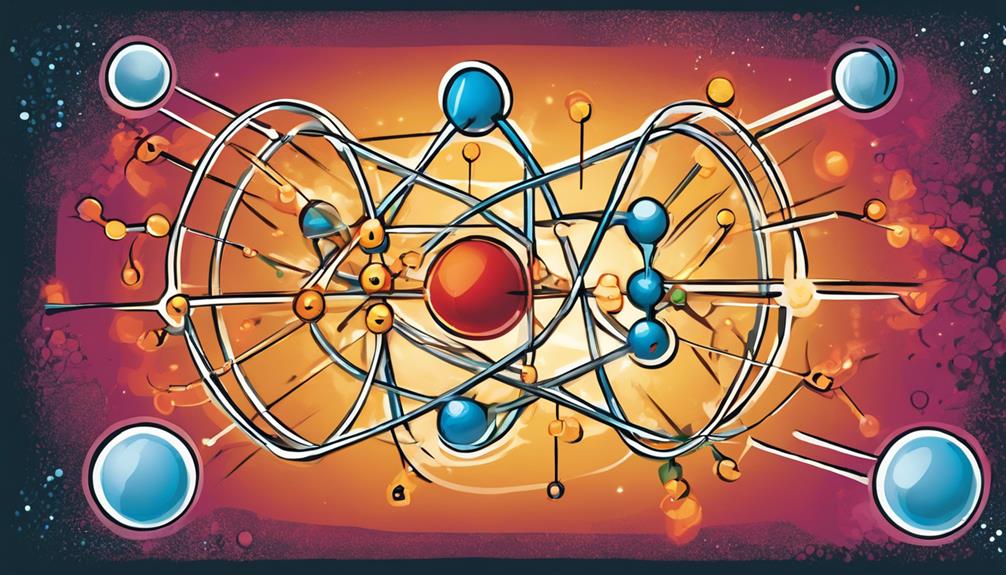Wind turbine blades now average over 170 meters, capturing more wind for efficiency. Advancements in technology drive these longer blades to boost energy production. Pushing boundaries, longer blades accommodate bigger rotor diameters and higher capacities. Discover how these advancements revolutionize wind energy sustainability.
Key Takeaways
- Wind turbine blades now average over 170 meters in length.
- Longer blades capture more wind for increased energy efficiency.
- Advancements in blade technology drive the increase in length.
- Larger rotor diameters and higher power capacities require longer blades.
- Continuous progress in blade technology pushes the boundaries of wind energy generation.
Evolution of Wind Turbine Blade Length
The evolution of wind turbine blade length has seen a remarkable increase in rural America, with the average blade size exceeding 170 meters. Longer blades play a pivotal role in enhancing energy production efficiency by capturing more wind, ultimately improving the overall performance of wind turbines.
This increase in blade length is a result of continuous advancements in blade technology, aimed at maximizing energy output and sustainability in the renewable energy sector. As the average length of wind turbine blades grows, it allows for accommodating larger rotor diameters and higher power capacities, pushing the boundaries of what's achievable in wind energy generation.
Understanding this evolution provides valuable insights into the technological advancements driving the design and efficiency of wind turbines, highlighting the significant progress made in harnessing wind power for a cleaner and more sustainable future.
Factors Driving Blade Length Increase

Factors driving the increase in wind turbine blade length include advancements in blade technology and the pursuit of greater energy efficiency. As wind energy becomes a more significant player in the renewable energy sector, the need for improved energy production efficiency has fueled the trend towards longer blades.
These extended blades are designed to capture more wind, ultimately increasing the amount of energy that can be harnessed from each turbine. Progress in blade technology plays a pivotal role in enabling the construction of these longer blades, allowing for enhanced performance and sustainability in wind energy production.
Additionally, the growth in rotor swept areas, with rotor diameters expanding by approximately 645% since the late 1990s, has necessitated longer blades to maximize energy output. By pushing the limits of blade length, the wind energy industry is working towards achieving higher levels of efficiency and productivity in energy production.
Addressing Theoretical Blade Length Limits

To overcome theoretical limitations on wind turbine blade length, engineers must carefully consider flexibility, vibration, safety concerns, transportation limitations, and dismantling challenges. When addressing the challenges associated with pushing the boundaries of blade length, several key factors come into play:
- Blade Flexibility: Beyond a certain length, blades face constraints related to bending and flexing, necessitating innovative design solutions.
- Vibration Concerns: Longer blades can experience increased vibration, affecting performance and potentially shortening the blade's operational lifespan.
- Safety Risks: Extreme weather events pose heightened safety risks with longer blades, requiring robust design considerations for stability and durability.
- Transportation Hurdles: Longer blades may exceed standard road, bridge, and tunnel restrictions, complicating the logistics of delivering them to wind farm sites efficiently.
Sustainable Solutions for Blade Recycling

Sustainable blade recycling solutions are necessary for minimizing environmental impact in the wind energy sector. As the wind industry continues to expand, addressing disposal challenges and implementing efficient recycling solutions for wind turbine blades is vital.
Initiatives like the Re-wind partnership are exploring innovative ways to repurpose decommissioned blades for civil engineering projects, reducing waste and environmental harm. Companies like Global Fiberglass Solutions are already producing EcoPoly Pellets and panels from used blades, offering sustainable recycling alternatives.
Additionally, wind industry associations are actively collaborating to develop advanced recycling methods such as solvolysis and pyrolysis, aiming to achieve 100% recyclability of wind turbine systems. By promoting the circular economy through repurposing and recycling initiatives, the wind energy sector can greatly reduce its carbon footprint and contribute to a cleaner, more sustainable future.
Policy Initiatives for Blade Recycling

Developing policy initiatives for blade recycling is essential in driving the sustainable disposal of wind turbine blades in the U.S.
Here are some key points to consider in the field of policy support for blade recycling:
- Policy Mechanisms: Various policy mechanisms are being developed to encourage and regulate the recycling of wind turbine blades effectively.
- Producer Responsibilities: Increasing producer responsibilities play a pivotal role in fostering the growth of blade recycling markets and ensuring sustainable practices.
- Regional Infrastructure: States like Texas and Iowa may need to provide support for the establishment of regional recycling infrastructure tailored to wind turbine blades.
- Collaboration is Key: Collaboration between states and wind industry companies is crucial for advancing blade recycling initiatives and addressing the end-of-use stage of these components.
Effective policy initiatives not only help in managing the disposal of wind turbine blades responsibly but also contribute to the overall sustainability of renewable energy practices.
Frequently Asked Questions
How Long Are Wind Turbine Blades?
When it comes to wind turbine blades, their length varies depending on the location and technology. Longer blades capture more wind, boosting energy production. Innovations aim to optimize blade design for greater efficiency and sustainability.
What Is the Best Blade Length for a Wind Turbine?
For best wind turbine performance, longer blades are typically better. They capture more wind, boosting energy production. Consider factors like wind speed and site characteristics when determining the most suitable blade length for your turbine.
Does Wind Turbine Blade Length Really Matter?
Yes, wind turbine blade length matters greatly. Longer blades capture more wind energy, increasing turbine efficiency. Advancements aim to maximize energy output by extending blade length. In rural America, blades have exceeded 170 meters to access higher wind speeds.
What Is the Average Length of a Wind Turbine Rotor?
When it comes to wind turbine rotors, longer blades are key. They help capture more wind for increased efficiency. The average length of a rotor blade is over 170 meters in rural America, impacting cost and performance substantially.
Does the Length of the Wind Turbine Blade Affect its Lifespan?
The lifespan of wind turbine blades can be affected by their length. Longer blades may experience higher stress and fatigue, leading to a shorter lifespan. Additionally, longer blades are more prone to damage from extreme weather conditions, which can further shorten the lifespan of wind turbines.
Conclusion
So, next time you see a wind turbine spinning gracefully in the distance, remember that the average length of a blade is around 50 meters, roughly the size of a blue whale.
Just like these majestic creatures, wind turbine blades play an essential role in our environment, harnessing the power of the wind to create clean energy.
Let's continue to support sustainable solutions and policies to guarantee these blades are recycled and reused for a greener future.








